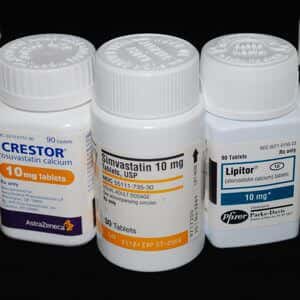
In 2013 the American College of Cardiology (ACC) and the American Heart Association (AHA) issued new statin guidelines for physicians. The recommendations were based on the Heart Risk Calculator. Doctors or patients could plug data into the calculator and determine who should take a statin-type cholesterol-lowering drug. Based on the 2013 guidelines, experts estimated that roughly half of all adult Americans should be taking statins.
What if the risk calculator relied on old and potentially flawed data? That could have led to overprescribing of statins and other drugs like blood pressure medicines and aspirin. A new study published in the Annals of Internal Medicine (June 5, 2018) suggests that revised risk assessments would dramatically change the prescribing landscape. Millions of people could have been prescribed medications they didn’t really need. That’s because their actual risk was likely much lower than was predicted by the old model.
The Scary Power of Risk Calculators:
Many physicians prescribe based on recommendations from expert panels. That appears to be especially true for the statin guidelines from the ACC and the AHA.
The risk calculators are available online, on smart phones, computers and other electronic devices. They are baked into many electronic health records. That means a doctor could be dinged by a hospital or health system if she doesn’t follow the statin guidelines.
The new research from Stanford suggests that the underlying data that was used to formulate the algorithms may have been erroneous. These pooled cohort equations or PCEs were based in part upon information gathered from middle-aged individuals in 1948.
Sanjay Basu, MD, PhD, was one of the Stanford investigators. He summed up the new analysis this way:
“A lot has changed in terms of diets, environments and medical treatment since the 1940s. So, relying on our grandparents’ data to make our treatment choices is probably not the best idea.”
The researchers estimate that nearly 12 million Americans labeled high-risk by the previous risk calculators would be considered lower risk if updated equations were applied. That might mean they wouldn’t need to take a statin or a blood pressure pill.
Conversely, some people would have been undertreated.
Dr. Basu describes it this way:
“So while many Americans were being recommended aggressive treatments that they may not have needed according to current guidelines, some Americans — particularly African-Americans — may have been given false reassurance and probably need to start treatment given our findings.”
From the Stanford Medicine News Center
The People’s Pharmacy Perspective on Statin Guidelines:
Dr. Basu and his colleagues suggest that risk equations should be updated regularly. Doing so:
“…may substantially reduce the number of U.S. adults recommended for statin therapy.”
Testing the Old Risk Calculator:
We agree that the risk analyzer requires revisions. We have plugged data into the old risk calculator. Here is one hypothetical male subject. He is a runner, a vegetarian and is not overweight. We’ll call him Sidney. His mother lived to 92 with no signs of heart disease. Sidney’s dad made it to 86. He died from the consequences of a fall and a hip fracture.
Sidney’s age is 66
His total cholesterol level is 180
Sid has great HDL cholesterol levels: 60
Not surprisingly, Sidney’s systolic blood pressure is perfect at 120
His diastolic BP is also great at 75
The calculator reports that our Sidney has a 10.4% chance of developing heart disease or a stroke over the next decade. Really?
The statin guidelines from the cardiology experts conclude:
“On the basis of your age and risk for heart disease or stroke, the ACC/AHA guidelines suggest you should be on a moderate to high intensity statin.”
If you believe that, we have a bridge or two to sell you.
You may wish to read some of our other articles about the statin guidelines. Here are just a few:
Should Half of All Adult Americans Take Statins?
New Analysis Disputes Dogma that All Seniors Need Statins
Should Everyone Over 65 Take a Statin to Prevent a Heart Attack?
Share your own thoughts about the statin guidelines below in the comment section

